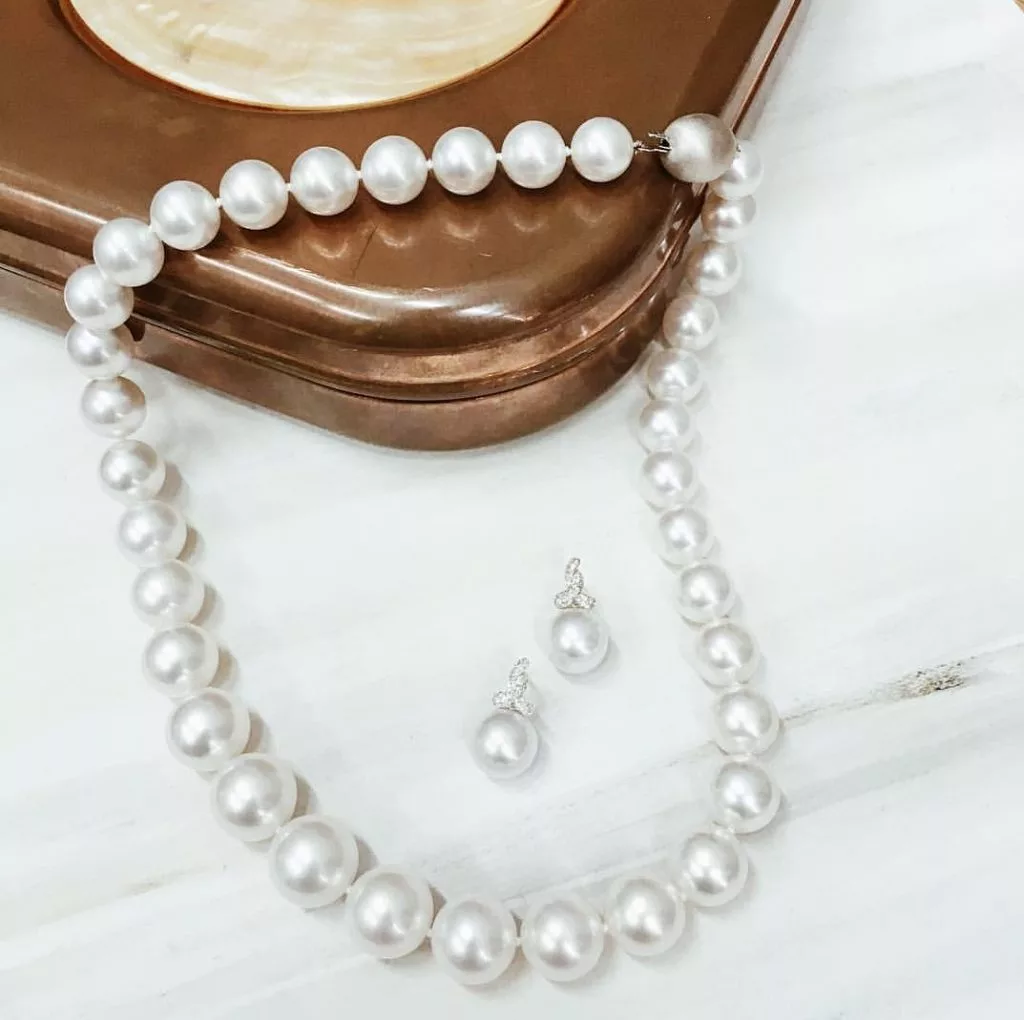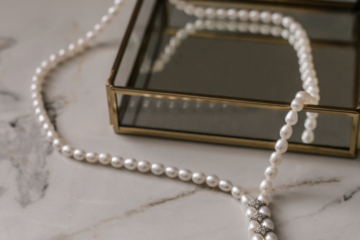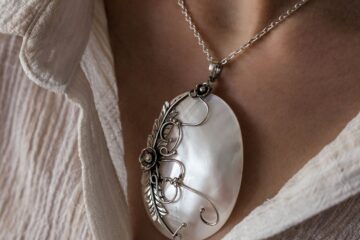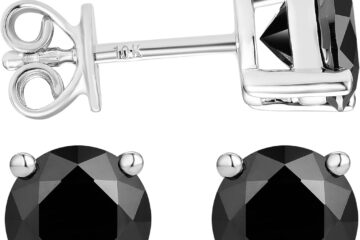South Sea pearls are saltwater pearls, while freshwater pearls are produced in freshwater environments. South Sea pearls come in a variety of colors, including blue, green, black, and pink, while freshwater pearls are typically white, off-white, or cream in color.
In addition, freshwater pearls are usually larger in size compared to South Sea pearls. Moreover, South Sea pearls are more expensive due to their rarity and higher quality. They are considered a good investment because of their value and durability.
On the other hand, freshwater pearls are more affordable and can withstand frequent wear. Their versatility and affordability make them a popular choice for those on a budget.
Unveiling Pearl Origins
Pearls have always captivated jewelry lovers with their timeless beauty and opulence. Whether it’s a South Sea pearl or a freshwater pearl, each type possesses its own unique characteristics that set it apart. One of the key factors that differentiates these pearls is their origin. Let’s take a closer look at the geographic locales and sourcing methods of South Sea pearls and freshwater pearls.
Geographic Locales And Sourcing
South Sea pearls: oceanic beds
In the depths of the ocean lies the source of mesmerizing South Sea pearls. These magnificent gems are sourced from oysters that thrive in the pristine waters of the South Seas, particularly in Australia, Indonesia, and the Philippines. These regions are renowned for their ideal conditions, including nutrient-rich waters and a stable climate, which contribute to the growth of exquisite South Sea pearls.
South Sea pearls are cultivated in oysters that are typically grown in large pearl farms. These farms carefully nurture the oysters, which are then gently harvested to extract the pearls. The harvesting process is meticulous, ensuring that only the finest pearls make their way into the market.
Freshwater pearls: riverine habitats
In stark contrast to the oceanic beds where South Sea pearls flourish, freshwater pearls are cultivated in riverine habitats. These pearls are primarily sourced from freshwater mollusks, notably mussels, found in rivers, lakes, and ponds across China, the United States, and other parts of the world.
Freshwater pearl cultivation involves a unique technique known as nucleation. In this process, a tissue graft is placed inside the mussel, stimulating the growth of a pearl. The mollusk then forms multiple pearls simultaneously, with each pearl sharing a common nucleus. This method allows for higher pearl production compared to other types of pearls.
Unlike South Sea pearls, which are cultivated in pearl farms, freshwater pearls are often harvested from the wild. This makes them more abundant and accessible in the market, catering to a wider range of budgets.
Now that we’ve explored the geographic locales and sourcing methods of South Sea pearls and freshwater pearls, it’s clear that each type has its own distinct origin. Understanding these origins can help you appreciate the unique qualities and value that each type of pearl brings to your jewelry collection.
Morphology And Creation
South Sea pearls and freshwater pearls have distinct differences. Freshwater pearls are typically white, off-white, or cream in color, while South Sea pearls can come in a variety of colors including blue, green, black, and pink. Additionally, freshwater pearls tend to be more affordable and versatile, making them a popular choice for those looking for a budget-friendly yet stylish option.
Pearl Formation Processes
Freshwater pearls and South Sea pearls go through different pearl formation processes. Freshwater pearls are produced by mussels that live in freshwater environments such as rivers, lakes, and ponds. These mussels create pearls by depositing layers of nacre, a combination of crystalline aragonite and organic matter, around an irritant.
On the other hand, South Sea pearls are created by oysters that inhabit saltwater environments, specifically the warm tropical waters of the South Seas. Similar to freshwater pearls, South Sea pearls are formed when the oysters coat a foreign object, such as a grain of sand or a tissue implant, with layers of nacre.
Diverse Mollusk Hosts
One of the key differences between South Sea pearls and freshwater pearls lies in the mollusk hosts that create them. Freshwater pearls are primarily produced by freshwater mussels, while South Sea pearls are predominantly formed by saltwater oysters.
Freshwater mussels belong to the Unionidae family and are capable of producing multiple pearls at once. In contrast, saltwater oysters, particularly Pinctada maxima species, are responsible for the production of South Sea pearls and typically form only one pearl at a time.
Nucleation And Its Impacts
The process of nucleation, or the introduction of the irritant that triggers pearl formation, greatly affects the resulting pearls. Freshwater pearls are usually nucleated by tissue implants, where a small piece of mantle tissue is inserted into the mussel. This tissue serves as the nucleus around which the mussel deposits nacre to create the pearl.
South Sea pearls, on the other hand, are typically nucleated using a spherical bead made of mother-of-pearl shell material. This bead is inserted into the oyster’s mantle, and the oyster then coats it with layers of nacre over time. The presence of the bead often results in larger pearls, as it acts as a guide for the pearl’s size and shape.
The different nucleation methods and materials used in the creation of freshwater pearls and South Sea pearls contribute to variations in their size, shape, and overall appearance.
Evaluating Pearl Value
South Sea pearls and freshwater pearls differ in color and shape. Freshwater pearls are typically white, off-white, or cream, while South Sea pearls come in various colors like blue, green, black, and pink. Additionally, freshwater pearls are formed in mussels, whereas South Sea pearls come from oysters.
Size And Rarity Considerations
When evaluating pearl value, one important factor to consider is the size and rarity of the pearls. South Sea pearls are known for their larger size compared to freshwater pearls. South Sea pearls can range in size from 9mm to 20mm or even larger, while freshwater pearls typically range from 2mm to 9mm. The larger size of South Sea pearls makes them more valuable and sought after in the market.
In terms of rarity, South Sea pearls are considered more rare compared to freshwater pearls. South Sea pearls are mainly cultured in the warm waters of the South Pacific and are produced by a specific type of oyster known as the Pinctada maxima. These oysters can only produce one pearl at a time, making each South Sea pearl a unique and scarce gem. On the other hand, freshwater pearls are cultured in freshwater lakes and rivers, and each mollusk can produce multiple pearls at once, leading to a higher supply and lower rarity.
Market Demand And Price Variances
Market demand and price variances play a significant role in evaluating pearl value. South Sea pearls are highly coveted and associated with luxury and exclusivity, which drives their market demand and ultimately, their price. The rarity, size, and luster of South Sea pearls contribute to their high value in the market.
Freshwater pearls, though not as rare or large as South Sea pearls, have their own appeal. They are more widely available, making them a more affordable option for those looking for pearl jewelry. The market demand for freshwater pearls is driven by their versatility, as they come in a variety of colors and shapes. The price of freshwater pearls is generally lower compared to South Sea pearls due to their higher supply.
Overall, the market demand and price variances between South Sea pearls and freshwater pearls indicate their distinct value propositions in the world of pearls. South Sea pearls represent luxury and exclusivity, while freshwater pearls offer affordability and variety.
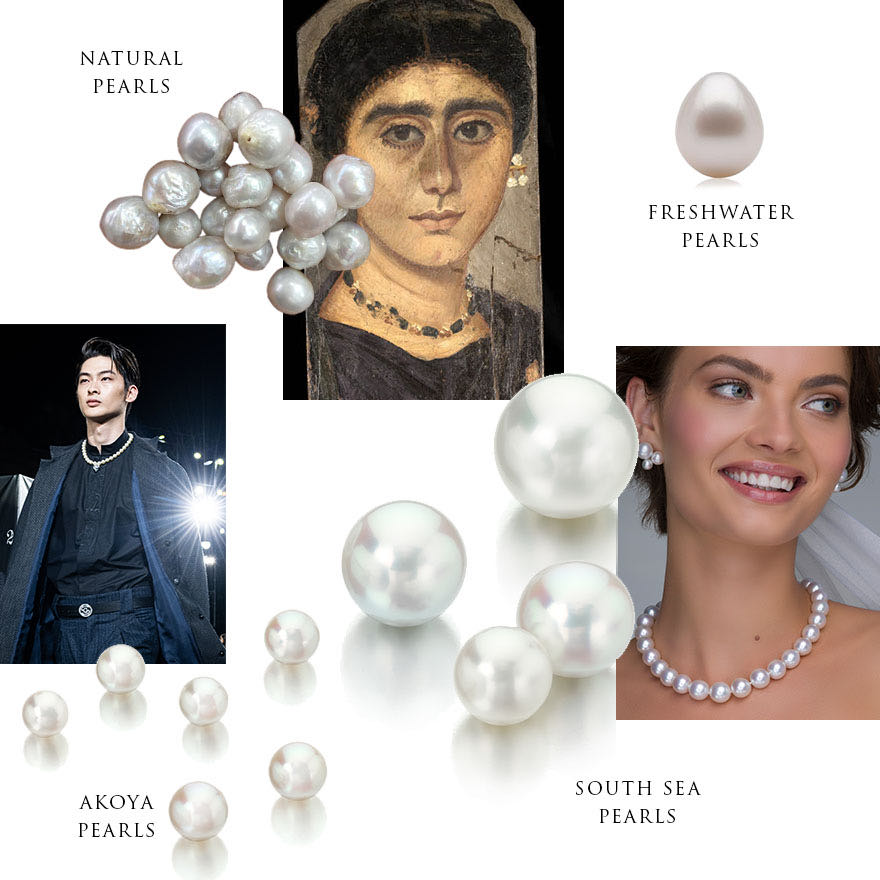
Credit: assael.com
Aesthetic Qualities Distinctions
When it comes to pearls, there are distinctive differences in aesthetic qualities between South Sea pearls and freshwater pearls. These differences include color ranges and overtones, luster and surface perfection contrasts, as well as shape variety and uniformity.
Color Ranges And Overtones
Color is one of the most noticeable factors when distinguishing between South Sea pearls and freshwater pearls. Freshwater pearls typically exhibit white, off-white, or cream hues, while saltwater pearls, like South Sea pearls, boast a wider array of colors including blue, green, black, and pink.
Luster And Surface Perfection Contrasts
Luster refers to the level of shine and reflection exhibited by pearls. South Sea pearls are renowned for their intense, mirror-like luster that gives them an unparalleled glow. On the other hand, freshwater pearls tend to have a softer, more subtle luster.
In terms of surface perfection, South Sea pearls tend to have smoother surfaces with minimal blemishes or imperfections. This contributes to their overall aesthetic appeal. Conversely, freshwater pearls may exhibit slight irregularities or surface marks, which can add character and charm to the pearls.
Shape Variety And Uniformity
South Sea pearls are often known for their round or near-round shapes, as these shapes are highly sought after. However, they can also come in various other shapes such as drops, baroques, or ovals. On the other hand, freshwater pearls offer a wider range of shapes, including round, off-round, baroque, and unique asymmetrical shapes.
While the variety in shape can provide a distinct and individual look, South Sea pearls are generally more uniform in shape compared to freshwater pearls.
Harvesting And Human Intervention
Harvesting and human intervention play a crucial role in the cultivation of South Sea pearls and freshwater pearls. Let’s explore the techniques used in pearl farming, the time frames from seeding to harvest, and the environmental factors that affect the quality of these exquisite gems.
Techniques In Pearl Farming
Pearl farming involves meticulous cultivation techniques to ensure the growth of high-quality pearls. The techniques used in cultivating South Sea pearls and freshwater pearls may vary due to the differences in their origin and farming methods.
In the case of South Sea pearls, the process starts with the insertion of a bead nucleus, along with a small piece of donor mantle tissue, into the oyster. This stimulates the oyster to secrete nacre, the natural substance that forms the pearl’s layers. The oysters are then carefully nurtured in pristine waters for several years, allowing the pearl to develop slowly and maintain its exceptional luster and size.
On the other hand, freshwater pearls are cultivated in mussels rather than oysters. These mussels are typically raised in freshwater lakes or ponds. The process begins with the insertion of mantle tissue into the mussel, which triggers the formation of pearls over time. Unlike the South Sea pearls, freshwater pearls can yield multiple pearls in a single mussel, resulting in higher production numbers.
Time Frames From Seeding To Harvest
The time frames for pearl cultivation differ significantly between South Sea pearls and freshwater pearls.
| Pearl Type | Time Frame |
|---|---|
| South Sea Pearls | 2-4 years |
| Freshwater Pearls | 6 months – 3 years |
South Sea pearls require a longer cultivation period as the oysters need more time to develop larger pearls. The slow growth process enhances the quality and size of the pearls, making them highly sought after in the jewelry industry. On the other hand, freshwater pearls have a quicker cultivation cycle, allowing for more frequent harvests and a higher production rate.
Environmental Factors Affecting Quality
Several environmental factors influence the quality of both South Sea pearls and freshwater pearls. These factors include water temperature, water quality, and the availability of nutrients.
- Water temperature: South Sea pearls thrive in warmer tropical and subtropical waters, typically found in Australia, Indonesia, and the Philippines. Freshwater pearls, on the other hand, grow in cooler freshwater bodies such as lakes and rivers in regions like China and the United States.
- Water quality: Pristine water quality is crucial for the healthy growth of pearls. Both South Sea pearls and freshwater pearls benefit from unpolluted waters that are low in contaminants and rich in nutrients.
- Nutrient availability: Adequate nutrient availability is essential for the formation of high-quality pearls. South Sea pearls flourish in nutrient-rich marine environments, while freshwater pearls rely on the nutrients present in freshwater bodies.
By ensuring optimal environmental conditions, pearl farmers can cultivate pearls with exceptional beauty, luster, and durability.
Frequently Asked Questions For Difference Between South Sea Pearls And Freshwater
How Can You Tell If A South Sea Pearl Is Fresh Water Pearl?
The difference between a South Sea pearl and a freshwater pearl can be determined by their color and shape. Freshwater pearls are usually white, off-white, or cream in color, while South Sea pearls come in a variety of colors like blue, green, black, and pink.
Additionally, freshwater pearls are typically round in shape, while South Sea pearls can be more irregular in shape.
Which Is Better Freshwater Or Saltwater Pearls?
Freshwater and saltwater pearls have different characteristics. Freshwater pearls are white or cream in color and more affordable. Saltwater pearls come in various colors and are more expensive. Overall, freshwater pearls are better for frequent wear and a limited budget.
Which Is More Expensive South Sea Pearl Or Fresh Water Pearl?
South Sea pearls are more expensive than freshwater pearls.
Conclusion
The main differences between South Sea pearls and freshwater pearls lie in their origin, color, shape, and price. South Sea pearls come from saltwater oysters, while freshwater pearls are cultured in freshwater mussels. Freshwater pearls are usually white or cream, while saltwater pearls come in a variety of colors.
Additionally, freshwater pearls tend to be more affordable than South Sea pearls. Knowing these distinctions can help you choose the right pearls for your jewelry collection.
